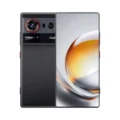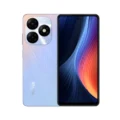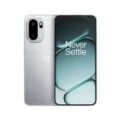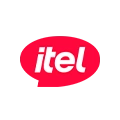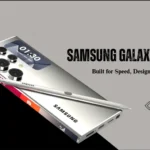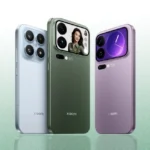ZTE Axon 60 Ultra Price in Pakistan is Rs. 167,000. ZTE Axon 60 Ultra has 12GB RAM and 512GB Storage with Android 14 and comes in amazing Obsidian Black colors. The ZTE Axon 60 Ultra is a high-end flagship phone that continues to improve from its previous iterations. With the latest technology and upgraded specifications. Projected to be launched between the second and fourth quarters of 2024. This phone is sure to catch the attention of tech-savvy individuals and average consumers. This in-depth analysis will discuss the specifications and features. That make the ZTE Axon 60 Ultra stand out as a top brand in the smartphone market.
ZTE Axon 60 Ultra
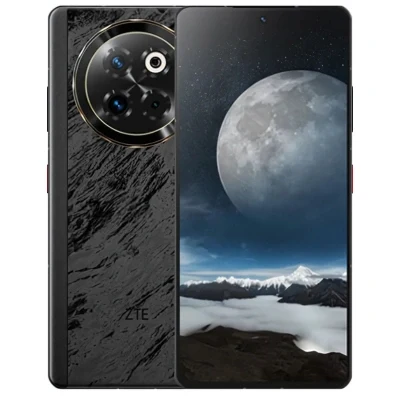
Specs
General
| Device Type | Smart Phone |
| Model | N/A |
| Announced | April, 2025 |
| Release Date | July, 2025 |
| Estimated Price | $800 to $1100 |
Design
| Dimensions |
163.6 x 76 x 9.1 mm (6.44 x 2.99 x 0.36 in) |
| Weight | N/A |
| Protection |
Glass front, aluminum frame, glass back |
| Colors |
Obsidian Black |
Network
| 3G Network |
HSDPA 850 / 900 / 1700(AWS) / 1900 / 2100 CDMA2000 1x |
| 4G Network |
LTE |
| 5G Network |
SA/NSA |
| SIM SIM (Subscriber Identity Module) is a small card that contains mobile network subscriber's account information. This allows the phone using the card to attach to a mobile network. The SIM card is most commonly associated with GSM and UMTS mobile networks. Moving a SIM card from one phone to another allows a subscriber to switch mobile phones without having to contact their mobile network carrier. SIM cards can also be used by a phone to store limited amounts of data, such as phone numbers and text messages. |
Nano-SIM + Nano-SIM IP68 dust/water resistant (up to 1.5m for 30 min) |
| Dual SIM | Yes |
| eSIM | No |
| 2G Network |
GSM 850 / 900 / 1800 / 1900 CDMA 800 |
Display
| Display Type Display Technology => A number of display technologies and types used in mobile phones => TFT (Thin Film Transistor), IPS (In-Place Switching), OLED (Organic Light Emitting Diode), AMOLED (Active-Matrix Organic Light-Emitting Diode), Super AMOLED (an even advanced version of AMOLED), Resistive Touchscreen (Resistive touchscreens contain two layer of conductive material with a very small gap between them which acts as a resistance), Capacitive Touchsceen (Capacitive touchscreen technology consists of a layer of glass coated with a transparent conductor) |
AMOLED, 120Hz |
| Size |
6.78 inches, 111.0 cm2 (~89.3% screen-to-body ratio) |
| Resolution |
1260 x 2800 pixels, 20:9 ratio (~453 ppi density) |
| Display Colors Display Colors is refers to the number of different shades of colors that the screen is capable of displaying => 64K colors, 256K colors and 16 million colors, Obviously 16M is highest available range of colors and better than others. |
16M Colors |
| Pixel Density Pixel Density (PPI) is refers to the concentration of pixels on a particular display, measured in pixels per inch (ppi). Pixel density is calculated by dividing the diagonal pixel resolution of a display by its diagonal size, higher pixel density better display quality. |
(~453 ppi density) |
| Touch Screen |
Multi-touch |
Media
| FM Radio | No |
| Loudspeaker | Yes, with stereo speakers |
Camera
| Primary Camera is able to capture photographs and usually videos, The most important characteristics of a camera are the resolution (measured in megapixels), lens focus type (fixed or automatic), higher megapixel cameras are known to capture higher quality photos, but not always a good measurement of the photos quality. |
50 MP, (wide), PDAF, OIS 50 MP, (ultrawide) 5 MP, (macro) |
| Video | 1080p@30fps |
| Camera Features |
LED flash, HDR, panorama |
| Built-In Flash Flash Light => There is commonly two types of flash lights are used in camera mobile phones, LED Flash (LED flash offers lower power consumption with drive circuitry that takes up very little room, LEDs can be strobed faster than any other light source), Xenon Flash (xenon flash produces an extremely intense full-spectrum white light for a very short duration) | Yes |
| Secondary |
32 MP, (wide) |
Software
| Operating System OS => Every computer system run on a base software called Operating System (OS). Operating System controls all basic operations of the computer (such as smartphone, PDAs, tablet computers and other handheld devices). The Operating System allows the user to install and run third party applications (apps), apps are used to add new functionality to the device. | Android 14 |
| Facebook Facebook is a popular free social networking website that allows registered users to create profiles, upload photos and video, send messages and keep in touch with friends, family and colleagues. The site is available in 37 different languages. | |
| Youtube Youtube is a popular free video-sharing website, Youtube is the largest video sharing site in the world, Millions of users around the world have created accounts on the site that allow them to upload videos that anyone can watch. |
Hardware
| Chipset Chipset is a group of integrated circuits designed to perform one or a more dedicated functions, often with real time computing constraints, Popular smartphones are equipped with more advanced embedded chipsets that can do many different tasks depending on their programming. |
Qualcomm SM8550-AB Snapdragon 8 Gen 2 (4 nm) |
| CPU CPU (Central Processing Unit) mostly known as processors, CPU processes instructions in order to carry out certain functions that make your device operate properly. Processors are often described as the brain of computers, smartphones and tablets, Smartphones and tablets rely on processors to carry out their every task, Processors are an incredibly important factor in selecting any type of computing device, including your smartphone. |
Octa-core (1x3.2 GHz Cortex-X3 & 2x2.8 GHz Cortex-A715 & 2x2.8 GHz Cortex-A710 & 3x2.0 GHz Cortex-A510) |
| GPU GPU (Graphics Processing Unit) is a single-chip processor designed to rapidly manipulate and alter memory to accelerate the creation of images in a frame buffer intended for output to a display, This includes things such as lighting effects, object transformations, and 3D motion. |
Adreno 740 |
| RAM (Memory) RAM (Random Access Memory) is a type of computer memory that can be accessed randomly, any byte of memory can be accessed without touching the preceding bytes that allows information to be stored and accessed quickly from random locations. RAM is the most common type of memory found in computer systems, smartphones, tablets and other electronic devices. | 12GB/16GB |
| Internal Storage Internal Storage is a data storage space (flash memory) mostly used in smartphones, tablets and other electronic devices where operating system, apps, music, photos, videos, files and other user data Is stored. | 512GB/1TB |
| Card Slot Memory Card Slot is a special slot for inserting a memory card. Memory cards allow you to expand the phone's built-in memory, A memory card (sometimes called a flash memory card or a storage card) is a small storage medium used to store data such as text, pictures, audio, and video, for use on small, portable or remote computing devices such as mobile phones, mp3 players, digital cameras. | No |
| Sensors Sensors are electronic components that detects and responds to some type of input from the physical environment. The specific input could be light, heat, motion, moisture, pressure and location, The output is generally a signal that is converted to use in computing systems, a location sensor, such as a GPS receiver is able to detect current location of your electronic device. |
Fingerprint (under display, optical), accelerometer, gyro, proximity, compass Dual satellite BDS support (Emergency SOS service) |
Connectivity
| Bluetooth Bluetooth is a wireless communications technology for exchanging data between mobile phones, headsets, computers and other network devices over short distances without wires, Bluetooth technology was primarily designed to support simple wireless networking of personal consumer devices. | 5.4, A2DP, LE, aptX HD, aptX Adaptive |
| Infrared Infrared connectivity is an old wireless technology used to connect two electronic devices. It uses a beam of infrared light to transmit information and so requires direct line of sight and operates only at close range. | |
| Wi-fi Wi-Fi is a popular wireless networking technology using radio waves to provide high-speed network connections that allows devices to communicate without cords or cables, Wi-Fi is increasingly becoming the preferred mode of internet connectivity all over the world. | Wi-Fi 802.11 a/b/g/n/ac/6e, dual-band |
| Wi-fi Hotspot | |
| USB | USB Type-C 3.1, OTG |
| GPS GPS The Global Positioning System is a satellite-based radio navigation system, GPS permits users to determine their position, velocity and the time 24 hours a day, in all weather, anywhere in the world, In order to locate your position, your device or GPS receiver must have a clear view of the sky. | GPS (L1+L5), GLONASS, BDS, GALILEO |
| NFC NFC (Near field communication) is a set of standards for smartphones and similar devices to establish peer-to-peer radio communications with each other by touching them together or bringing them into proximity, usually no more than a few inches. | Yes |
| HDMI HDMI (High-Definition Multimedia Interface) is a compact audio/video interface for transferring uncompressed video data and compressed or uncompressed digital audio data from a HDMI-compliant source device to a compatible computer monitor, video projector, digital television, or digital audio device. | |
| Wireless Charging Wireless Charging (Inductive Charging) uses an electromagnetic field to transfer energy between two objects. This is usually done with a charging station. Energy is sent through an inductive coupling to an electrical device, which can then use that energy to charge batteries or run the device. | N/A |
Data
| GPRS GPRS (General Packet Radio Service) is a packet oriented mobile data service on the 2G and 3G cellular communication system's global system for mobile communications (GSM), Generally, GPRS is used for the purpose of wireless data transfer, such as sharing pictures and videos or browsing the Internet via a mobile phone connection. | |
| EDGE EDGE (Enhanced Data GSM Environment) is a wireless network technology generally considered the next step in the 2G network offers data transfer rates up to four times faster than ordinary GSM networks, Generally, EDGE is used for the purpose of wireless data transfer, such as sharing pictures and videos or browsing the Internet via a mobile phone connection. | |
| Speed | HSPA, LTE (CA), 5G |
| Web Browser Web Browser => a web browser is a software application used to locate, retrieve and display content on the World Wide Web, including Web pages, images, video and other files, The primary function of a web browser is to render HTML, the code used to design or markup webpages. | HTML5 |
Messaging
| SMS SMS (Short Messaging Service) is a text messaging service component of phone, Web, or mobile communication systems. It uses standardized communications protocols to allow mobile phone devices to exchange short text messages over the networks. | Yes (threaded view) |
| MMS MMS (Multimedia Messaging Service) is a standard way to send messages that include multimedia content (audio clips, video clips and images) to and from mobile phones over wireless networks using the WAP protocol. | |
| Email Email (Electronic Mail) is a system for receiving, sending, and storing electronic messages, Similar to a letter, email is text messages that may contain files, images, or other attachments sent via the internet to a recipient by using applications and software prograps. An email address is required to receive email, and that address is unique to the user. | Yes |
| IM IM (Instant Messaging) is an exchange of text messages through a software application, it enable you to create a kind of private chat room with another individual in order to communicate in real time over the Internet. | Yes |
Battery
| Battery Type Battery Type => Cell phones run on various kinds of batteries depending on the manufacturer, phone size or shape and features. There are basically four types of cell phone batteries => Lithium Polymer, Lithium Ion, Nickel Metal Hydride and Nickel Cadmium. |
Li-Po |
| Capacity Battery Capacity is a measure (typically in Amp-hr) of the charge stored by the battery, and is determined by the mass of active material contained in the battery. The battery capacity represents the maximum amount of energy that can be extracted from the battery under certain conditions. | 6000 mAh |
| Placement | Non-Removable |
| Charging | 80W wired |
Amazing Design of ZTE Axon 60 Ultra
The ZTE Axon 60 Ultra is a sleek, contemporary design that focuses on aesthetics and functionality. As much as details of dimensions and weight are not forthcoming, the smartphone accommodates a Dual SIM configuration that supports users to effectively have two networks. The appearance is likely to conform to the smooth trend common with premium phones, with sturdy materials providing the luxury feel.
6.78 Inches Display
ZTE Axon 60 Ultra boasts a gigantic, colorful screen measuring 6.78 inches. It displays plenty of very pretty-looking colors in excess of a billion! It also makes images look very colorful and vivid, particularly with some features known as HDR10 and a super-speed refresh rate of 120 times per second, so everything looks smooth and colorful. The screen itself is extremely sharp, with small dots referred to as pixels crowded together, which makes the images outlined and edged just right for viewing videos and games.
Performance
Under the hood, ZTE Axon 60 Ultra relies on the Qualcomm SM8550-AB Snapdragon 8 Gen 2 processor, which is built on a 4nm process. The beast processor has an octa-core CPU arrangement, consisting of high-performance and power-saving cores blended in one, allowing it to efficiently handle demanding apps and multitasking. The Adreno 740 GPU supports the CPU with heavy-duty graphics capability for improved gaming performance.
Storage
The device comes in two memory variants: 256GB with 12GB of RAM and 512GB with 12GB of RAM, which targets varied user demands without any expandable storage option. The variants allow users to carry a huge amount of data, apps, and multimedia without encountering storage issues while enjoying immense multitasking features with the lavish RAM.
Elegant Camera
ZTE Axon 60 Ultra possesses a powerful camera system, with a triple camera system on the back. It has a 50 MP wide lens with phase detection autofocus (PDAF), Laser AF, and optical image stabilization (OIS) for increased image quality and stability. The telephoto lens is also 50 MP with 3x optical zoom, ideal for shooting distant subjects. There is also an unspecified macro camera for clear close-up photography.
The camera further offers more advanced video recording features, with 8K capture at 30 fps, 4K at multiple frame rates, and 1080p capture with gyro-EIS and HDR10 capabilities. The rear camera accommodates a 32 MP lens to deliver high-quality selfies and 1080p video recording at 30 fps.
Battery Life
The ZTE Axon 60 Ultra boasts an extremely large battery that will last for a considerable amount of time without needing to be recharged. When you do charge it, it can get charged in no time since it is fast charging enabled up to 80 watts. This is such a relief since you won’t have to wait for long before your phone is available to use again, even if you’re in a hurry and on the move.
Conclusion
The ZTE Axon 60 Ultra is a super cool phone with many powerful components within it. It shoots great pictures, acts very well, and the battery lasts long enough so you can use it all day. Its distinct style makes it stand out from other high-end phones. The phone is fine for everyday use, photography, and playing fun games.
Reviews
Sorry, you have not permission to write review for this product.
Disclaimer Note
We always try our best to keep our website content and information updated and correct, the material and information contained on our website is for general information purposes only, You should not rely upon the material and information as a basis for making any business, legal or any other decisions.










